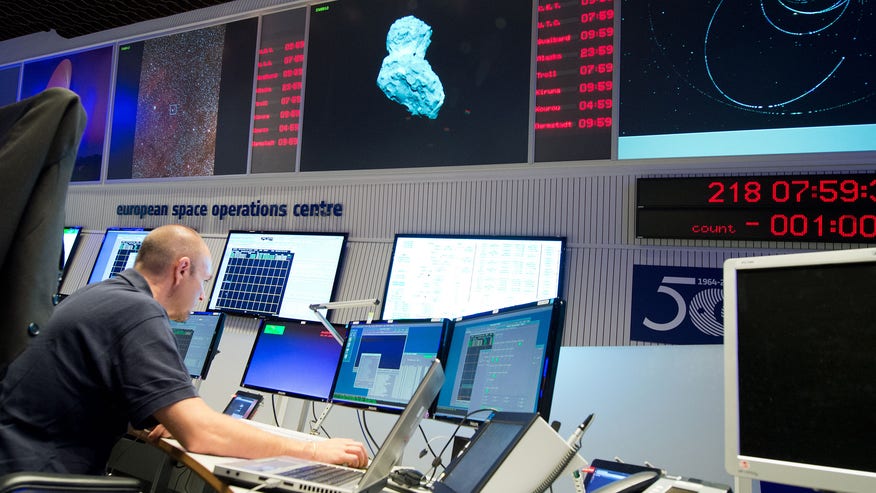Scientists said Saturday that the Philae lander, the first probe to land on a comet, has fallen into into "idle mode" for a potentially long silence due to lack of sunlight.

Controllers of the lander ordered it to move away from the shadows of the comet and to pivot so that solar panels could recharge depleted batteries.
"We don't know if the charge will ever be high enough to operate the lander again," Paolo Ferri, ESA's head of mission operations, told The Associated Press.
Ferri was also unsure if the probe’s drill even touched the ground during the drilling operation.
Scientists had endured an agonizing wait Friday before the Rosetta orbiter re-established contact with the probe. After finally touching down in the wrong location on Wednesday, there were fears that the lander would run out of battery power before the connection could be made.
“Philae still talking!” declared the agency, in a blog post late on Friday, confirming that Rosetta’s “communication pass” began at 5:29 p.m. ET.
The Philae lander made history on Wednesday when it became the first probe to land on a comet. 67P/Churyumov-Gerasimenko, which is about 2.5 miles wide and travels at speeds up to 84,000 miles per hour, is 317 million miles from earth.
During a press conference early on Friday, ESA scientists said that the probe may receive enough solar power to communicate when its orbit nears the sun in August 2015.
Known as a “short period comet,” 67P/Churyumov-Gerasimenko takes 6.6 years to orbit the sun.
The culmination of an audacious 10-year mission, the Philae lander separated from its Rosetta mothership and successfully descended to the comet Wednesday. The touchdown, however, was fraught with problems, and the lander bounced twice before landing in the shadow of a cliff – a serious problem for the solar panels designed to provide long-term power to Philae after its primary battery is exhausted.
Early on Thursday, the ESA released the first picture taken by the probe after determining that the craft had stabilized following its tension-filled landing. The agency subsequently released the first panoramic picture taken from the lander. The three feet of Philae's landing gear can be seen in some of the frames.
Philae and the Rosetta spacecraft planned to use 21 instruments to analyze the comet. Scientists hope the $1.62 billion mission will help them better understand comets and other celestial objects, as well as possibly answer questions about the origins of life on Earth.

No comments :
Post a Comment